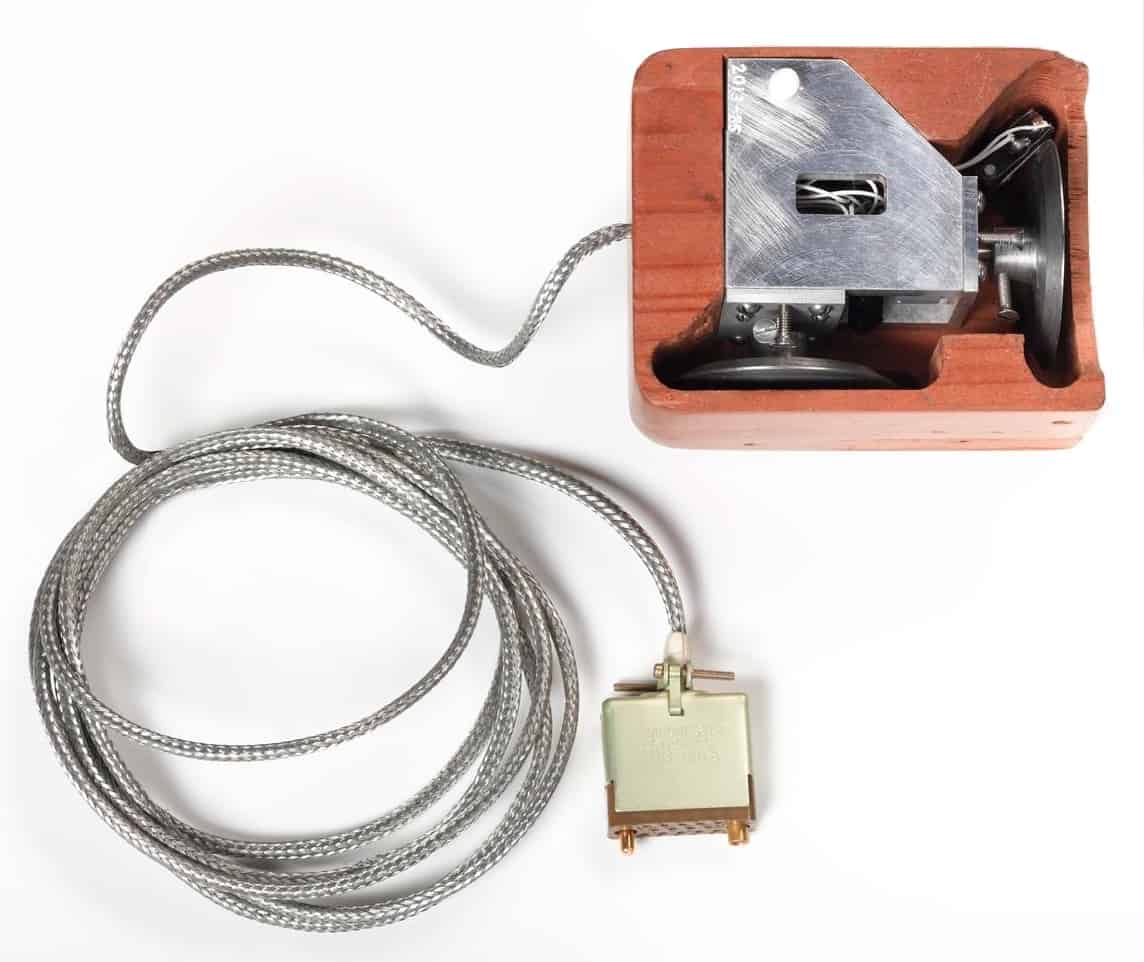
Facts About the Computer Mouse
- Douglas Engelbart and Bill English named their first prototype after the rodent due to its shape. The name computer “mouse” has been used ever since the first prototype.
- The primary inventor of the mouse, Doug Engelbart, never received any royalties because the patent was held by the Stanford Research Institute.
- Engelbart stated that the plural of the computer mouse is “mice” but many dictionaries also accept “mouses.”
- In early 1967, Engelbart and English considered using a “knee-control” device that appeared promising. That device was based on Engelbart’s observation that the human foot was a pretty sensitive controller of the gas pedal in cars.
The Computer Mouse: How It Worked
The original mouse had the cord in the front, but they quickly moved it to the back end to get it out of the way. It was a simple mechanical device with two perpendicularly mounted discs on the bottom. You could tilt or rock the mouse to draw perfectly straight horizontal or vertical lines.
Engelbart applied for a patent in 1967 and received it in 1970 as an assignor of SRI for the wooden shell with two metal wheels. He created the device to function as an X-Y position indicator for a display system. “It was nicknamed the mouse because the tail came out the end,” Engelbart revealed about his invention. His version of windows and GUI was not considered patentable (no types of software were issued patents at that time), but Engelbart had over 45 other patents to his name at the end of his career.

Original Design and Function of the Mouse
- The original design of the computer mouse, as invented by Douglas Engelbart in 1963, was a wooden block with two metal wheels that rolled along the x- and y-axes. The mouse was connected to the computer via a cord, and it communicated the movement of the mouse to the computer. It also had one button on top, which was used to select items on the computer screen. The metal wheels were used to track the movement of the mouse along the x and y axis, which in turn moved the cursor on the screen. This design was called the “X-Y Position Indicator for a Display System” or simply the “X-Y Position Indicator.”
- The original function of the computer mouse was to improve the efficiency and ease of use of computer interfaces. Engelbart believed that the mouse could be used to manipulate on-screen objects and make it easier to navigate through documents and programs.
- The mouse allowed users to point, click, and drag objects on the screen, making it easier to navigate through documents and programs, and the button on top of the mouse allowed users to select items on the screen. The mouse was also used to draw shapes on the screen, and it was a key component in Engelbart’s vision of an “Online System” (NLS) which was a system that allowed users to interact with a computer through a graphical user interface (GUI).
- The mouse was first shown off in 1968 as part of Engelbart’s “Mother of All Demos” presentation, which also featured the GUI, hypertext, and other interactive computing concepts. The demonstration attracted a lot of interest and was largely regarded as a development in human-computer interaction.
- The mouse has since undergone design and functionality improvements, but its fundamental idea and purpose have not changed: it is a pointing device that enables people to interact with computers more naturally by moving a cursor on the screen as they move the mouse.
Evolution of Mouse
- The first mouse was a wooden shell with two metal wheels on the bottom, which were used to track movement on a surface.
- In the 1970s, Xerox Corporation developed the first graphical user interface (GUI) for their Alto computer, which was the first to use a mouse as the primary input device. This design was later commercialized by Apple in the Macintosh computer, which was released in 1984.
- In the late 1970s and early 1980s, the ball mouse became popular as an alternative to the wheel mouse. The ball mouse used a rolling ball to track movement instead of wheels. This design was more durable and required less maintenance than the wheel mouse. However, the ball mouse had a tendency to collect dust and dirt, which could affect its performance.
- In the 1980s and 1990s, optical mice became popular. These mice used a light-emitting diode (LED) and a sensor to track movement instead of a ball. This design was more precise than the older ball mouse and did not require cleaning.
- Today, most mice use laser technology to track movement, which is more precise than the older optical technology. Additionally, many modern mice have additional buttons and features such as scroll wheels, thumb buttons, and wireless connectivity. They can also come with programmable buttons and even touchpads, which makes them more versatile.
- In recent years, touch-based input has also become popular with the advent of smartphones and tablets, which have touchscreens. Some laptops and desktops also now have touchscreens which allow for touch-based input in addition to traditional input devices like the mouse and keyboard.

